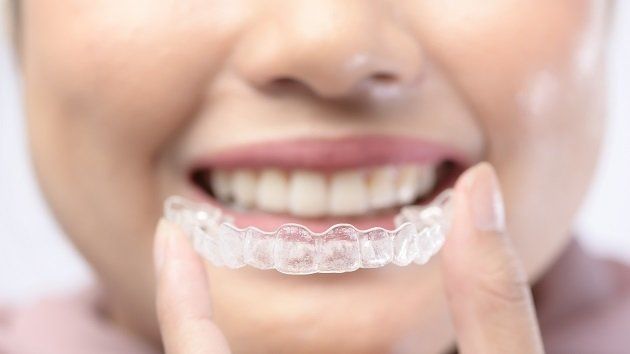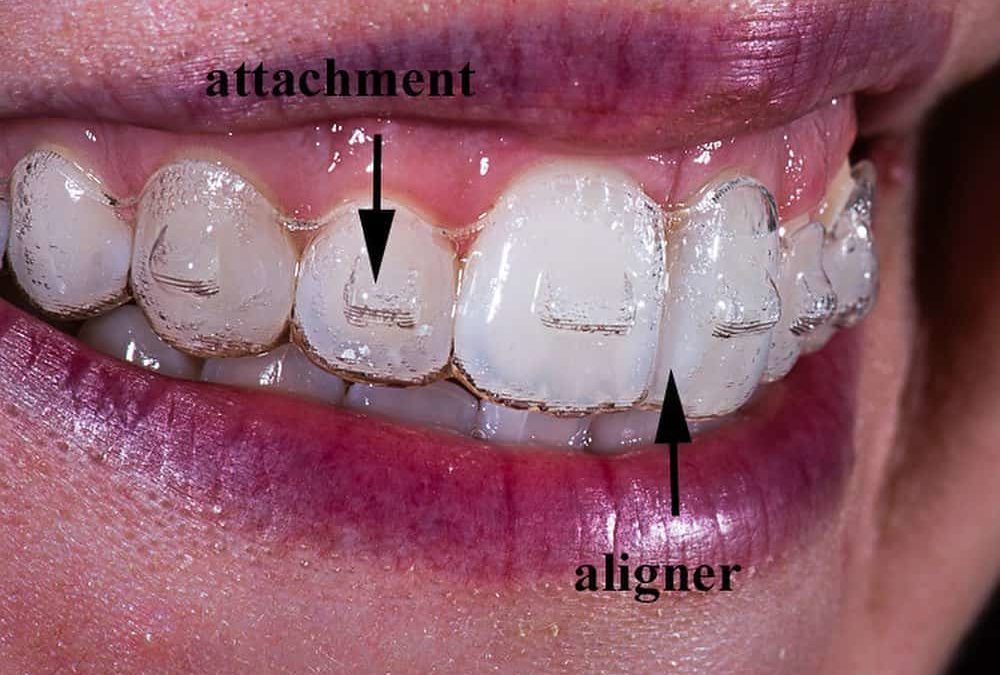Success Stories: How Invisalign Changed Lives and Enhanced Confidence
Success Stories: How Invisalign Changed Lives and Enhanced Confidence
Blog Article
Invisalign vs. Conventional Braces: Which Choice Is Right for You?
When thinking about orthodontic therapy, the option between Invisalign and typical braces presents a number of vital factors that warrant careful assessment. Invisalign offers a very discreet option with removable aligners, while conventional braces supply an extra visible yet reliable solution for serious imbalance.
Review of Therapy Choices

In comparison, traditional dental braces are composed of steel brackets and wires that are adhered to the teeth. This technique applies continuous pressure with time to accomplish positioning. While efficient for complex orthodontic concerns, standard dental braces require routine brows through for adjustments and can position challenges in keeping oral hygiene because of the problem of cleaning about brackets and wires.
Both alternatives have their values, and the choice often rests on specific dental conditions, way of living choices, and client compliance. Eventually, speaking with an orthodontic professional is crucial for identifying the most ideal therapy strategy tailored to individual requirements. Understanding the nuances of each alternative can dramatically affect the general success of orthodontic therapy.
Aesthetic Considerations
A significant factor affecting the choice in between Invisalign and standard braces is the visual appeal each treatment offers. Invisalign aligners are crafted from clear plastic, making them basically unseen when worn.
In comparison, typical braces contain steel brackets and wires, which can be extra noticeable. While innovations in orthodontic modern technology have actually caused the development of smaller braces and tinted elastics, standard braces still maintain an even more obvious account. For some people, the exposure of braces may hinder them from looking for needed therapy.
Eventually, the choice in between Invisalign and standard braces may rest on individual choices regarding aesthetic appeals. Individuals that focus on discretion often lean toward Invisalign, while those who are much less concerned concerning presence may go with typical braces. Understanding the visual effects of each option is crucial for making an educated choice that lines up with one's way of living and choices.
Comfort and Convenience

In terms of comfort, Invisalign aligners are detachable, enabling clients to appreciate their favorite foods without restriction and preserve ideal dental hygiene. Brushing and flossing are simplified, as the aligners can be secured throughout these regimens, whereas conventional dental braces require cautious maneuvering around brackets and wires.
In comparison, standard braces require routine changes, making them much less convenient for those with busy timetables. Overall, the comfort and comfort of Invisalign make it an attractive option for numerous people looking for orthodontic therapy.
Therapy Period and Performance
While both Invisalign and conventional dental braces are reliable in dealing with oral misalignments, the period of treatment can differ significantly in between the two options. Generally, Invisalign treatment can take anywhere from 12 to 18 months, relying on the intricacy of the instance. The clear aligners function by gradually shifting teeth into their desired placements, and regular follow-ups with an orthodontist aid ensure development stays on track.
In comparison, standard dental braces usually call for a longer commitment, typically varying from 18 months to 3 years. This results from their set nature and the use of cables and brackets, which can be more effective for serious imbalances and complex instances (Invisalign). The therapy effectiveness of conventional dental braces is well-documented, as they enable exact changes and higher control over tooth movement
Eventually, the choice in between Invisalign and conventional braces may depend upon both the anticipated treatment duration and the details oral problems available. Consulting with an orthodontist is essential, as they can provide tailored recommendations based upon private requirements, making sure the picked approach lines up with wanted results and durations.
Cost Comparison and Insurance Policy Alternatives
Price plays a substantial duty in the decision-making procedure for people taking into consideration orthodontic treatment, whether deciding for Invisalign or helpful resources standard braces. Usually, the cost of Invisalign ranges from $3,000 to $8,000, while typical braces commonly cost in between $2,000 and $6,000. Aspects influencing these expenses consist of the intricacy of the case, the period of treatment, and geographical place.
Insurance insurance coverage can significantly influence out-of-pocket costs. Lots of dental insurance coverage strategies give partial protection for orthodontic therapies, but the specifics can differ extensively. It is important for individuals to evaluate their insurance policy plans to determine the level of insurance coverage for either alternative. Typically, typical braces might be extra often covered by insurance coverage plans compared to Invisalign, which some insurance companies classify as an aesthetic treatment.
In addition, a number of orthodontic practices use adaptable settlement plans, making both therapy alternatives more available. Clients should make inquiries regarding possible financing alternatives and price cuts for ahead of time settlements. Reviewing the complete price, consisting of insurance advantages and layaway plan, is important for making an educated decision that straightens with both visual choices and spending plan factors to consider.

Final Thought
In recap, the selection in between Invisalign and typical braces pivots on multiple factors, including aesthetic preferences, convenience, therapy period, and price. Invisalign supplies a very discreet, detachable option that helps with dental hygiene and nutritional visit this web-site adaptability, while traditional braces might be preferable for complex oral issues and often come with a lower price factor. Inevitably, consultation with an orthodontist is necessary to analyze individual conditions and identify one of the most suitable treatment option for accomplishing optimum oral alignment.
When taking into consideration orthodontic therapy, the selection between Invisalign and typical braces provides numerous crucial variables that warrant cautious analysis.Contrasting Invisalign and typical dental braces exposes distinct therapy options for orthodontic modification.While both Invisalign and typical braces are efficient recommended you read in remedying oral imbalances, the duration of treatment can differ substantially between the two alternatives.Expense plays a substantial duty in the decision-making procedure for individuals taking into consideration orthodontic treatment, whether choosing for Invisalign or traditional braces.In recap, the choice between Invisalign and typical braces hinges on multiple aspects, including aesthetic choices, comfort, therapy duration, and cost.
Report this page